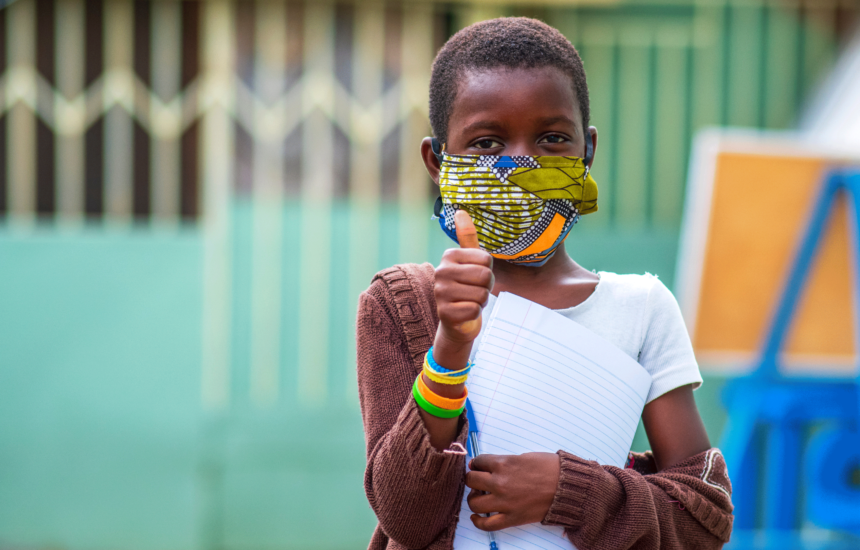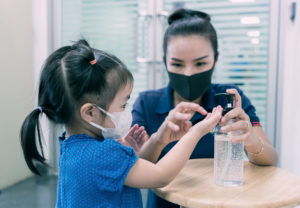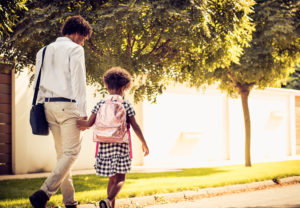Our Response to COVID-19: Resources for Leaders and Educators


A Message From CEO Diane Whitehead
COVID-19 has disrupted education in profound ways, presenting significant challenges for educators, families, and children. In response to the great need for information and guidance during this difficult time, CE International has been responding to the COVID-19 crisis by offering resources and other supports. Below, you will find links to videos, courses, guides, and resources.

Empowering Your Child as a Global Collaborator
Download the Guide

Education Leadership During Crisis: Applying Education Diplomacy in Response to COVID-19
A free, online mini-course

Emerging From Crisis: Covid-19 Guide for Reopening Primary Schools and ECD Programs
A free, online mini-course
 Our Virtual Community of Practice. Click on the links below to watch the recorded videos of conversations about various topics related to the Covid-19 pandemic. The conversations brought people together from all over the world to provide their own particular take on a given theme, including both guests on the call and viewers.
Our Virtual Community of Practice. Click on the links below to watch the recorded videos of conversations about various topics related to the Covid-19 pandemic. The conversations brought people together from all over the world to provide their own particular take on a given theme, including both guests on the call and viewers.
Recorded Videos:
Week 1: Self Care
Week 2: Keeping Children Engaged While Distance Learning
Week 3: Social Distancing
Week 4: Reopening Schools
Week 5: School Leaders’ Perspective
Week 6: Self-Care Check-up
Week 7: Engaging Families
Week 8: Team Building and Supporting Staff
Week 9: Distance Learning Strategies
Resources for Addressing the Coronavirus With Children:
UNICEF
https://www.unicef.org/coronavirus/covid-19
UNICEF is working with global health experts around the clock to provide accurate information. Information you can trust is grounded in the latest scientific evidence. We’ll continue to provide the latest updates, explainers for parents and teachers, and resources for media as new information becomes available, so check back to stay informed of the best ways to protect yourself and your family
The Exploratorium Learning Toolbox
https://www.exploratorium.edu/learn
Find free science activities and materials addressing timely public health topics around COVID-19, as well as general science support activities and materials for virtual classrooms and at-home learning.
The Alliance for Child Protection in Humanitarian Action: Technical Note
https://alliancecpha.org/en/COVD19
The Alliance developed this technical note for the protection of children during the COVID-19 pandemic. The aim of this brief is to support child protection practitioners to better respond to the child protection risks during this pandemic. Translations in French, Spanish, Arabic, Mandarian Chinese, Korean, Farsi and Italian will be released on 20 March 2020.
When children are out of school, teachers and parents may be looking for ways to support their continued learning and engage them in enriching activities. Below are some resources and tools that are worth exploring (many of these have been featured in Childhood Education Innovation). We will continue to add resources to this page as we find them.
UNESCO offers a list of educational applications and platforms to help parents, teachers, schools, and school systems facilitate student learning and provide social caring and interaction during periods of school closure. While these solutions do not carry UNESCO’s explicit endorsement, they tend to have wide reach, a strong user-base and evidence of impact. Most of the solutions are free and several support multiple languages.
Children’s Museum of Indianapolis Museum at Home
www.childrensmuseum.org/MuseumAtHome
This virtual tour is designed for the whole family and includes home workouts for physical fitness, science experiments to stimulate your mind, art to help you utilize your creativity, story time to help you escape, and more.
Encyclopaedia Britannica LaunchPacks®
https://britannicalearn.com/covid-19-free-resources/
Britannica is offering free access to both LaunchPacks Social Studies and LaunchPacks Science. Each content pack includes a variety of multimedia resources to match the PreK-12 science and social studies curriculums, to promote critical inquiry, and build connections between disciplines.
22.33: Podcasts for Learning About the World
https://eca.state.gov/2233
22.33 is an audio podcast produced by the Collaboratory in the U.S. Department of State’s Bureau of Educational and Cultural Affairs (ECA). The podcast features first-person narratives and anecdotes from people who have been involved with ECA exchange programs. Each week, 22.33 brings you tales of people finding their way in new surroundings. With a combination of survival, empathy, and humor, ECA’s innovative podcast series delivers unforgettable travel stories from people whose lives were changed by international exchange.
The Smithsonian Learning Lab
https://learninglab.si.edu/
Through this site, treasures of the world’s largest museum, education, and research complex are within reach. The Lab is a free, interactive platform for discovering millions of authentic digital resources, creating content with online tools, and sharing in the Smithsonian’s expansive community of knowledge and learning.
Smithsonian Open Access
https://learninglab.si.edu/openaccess
You can download, share, and reuse millions of the Smithsonian’s images. New platforms and tools provide easy access to nearly 3 million 2D and 3D digital items from the Smithsonian collections—with many more to come. This includes images and data from across the Smithsonian’s 19 museums, nine research centers, libraries, archives, and the National Zoo.
Ubongo Toolkits
https://toolkits.ubongo.org/
This is a large library of quality, African-made early learning materials and educational resources for kids aged 0-14, covering various topics from early numeracy, pre-literacy, and social and emotional skills to engineering, science, and technology.
The Global Oneness Project
https://www.globalonenessproject.org/
The Global Oneness Project (the Project) uses the power of immersive storytelling as a transformative tool in the classroom. Their multimedia platform contains over 50 award-winning short documentary films, 40 photo essays, and accompanying lesson plans. Each story connects students to cultural, environmental, and social issues through stories about the lives of individuals and communities navigating global meta-level issues, such as climate change, poverty, endangered cultures, migration, and sustainability.
The Project’s Exploring Indigenous Language Vitality global lesson plan, in collaboration with Google Earth’s audio collection “Celebrating Indigenous Languages,” allows students to explore the linguistic diversity and vitality of Indigenous languages by listening to speakers around the world. They will discover how Indigenous languages are interconnected through identity, cultural heritage, and traditional ecological knowledge and how Indigenous peoples and communities are a vital part of the fabric and story of humanity.
Kids on Earth
www.kidsonearth.org (web site)
www.vimeo.com/kidsonearth (video library)
This free online collection of interviews with children and teenagers, 8 years old to 15 years old, living around the world and sharing details about their lives, hopes, dreams, and interests is a unique tool for learning about the world and the young people who live in it. The videos can be used to prompt discussion about life in other countries, immigration, history, geography, science, creative expression, population growth, demographics, or friendship. Others promote the idea of asking questions as a way to learn through conversation and active listening.
The Everyday Projects
https://www.everydayprojects.org/
The Everyday Projects uses photography to challenge stereotypes that distort our understanding of the world. Students use The Everyday Projects to gain a broader understanding of life around the world, and then apply those lessons to their own lives, telling the stories of their own communities through photography. Our curriculum, designed for middle school and high school, encourages students over several classroom sessions to learn about stereotypes, photography, representation, how journalism is made, and truth in storytelling.
Dollar Street From Gapminder
https://www.gapminder.org/dollar-street/matrix
Dollar Street uses photos as data to show what life looks like on different income levels. A team of photographers have documented over 264 homes in 50 countries so far, and the list is growing. In each home, the photographer spends a day taking photos of up to 135 objects, like the family’s toothbrushes or favorite pair of shoes. All photos are then tagged (household function, family name, and income). Gapminder works to address misconceptions about global development with a fact-based worldview everyone can understand. They produce free teaching resources based on reliable statistics, and collaborate with universities, UN organizations, public agencies, and non-governmental organizations.
Guardians of History
adventure.britannica.com
Children and families can immerse themselves in ancient history with Guardians of History™, a new interactive voice-activated game from Encyclopaedia Britannica, where players learn about the past through an engaging time-travel adventure and save history from forces that threaten it. Guardians of History is free to use on all supporting devices. The first episode, “The Olympia Obstacles,” is a fun, choice-driven experience where the player travels back in time to the ancient city of Olympia, Greece. When developing the game’s setting, content, characters, story, and imagery, the writers and editors drew from the Britannica’s historical archives to ensure historical accuracy. The resulting 40-minute audio experience teaches the player about Ancient Greece through dialogue, sound, and meaningful choices that lead to eight different endings.
Global Nomads Group
http://gng.org/student-to-world
By leveraging technology, storytelling, and personal connection, Global Nomads Group enables conversation between middle school and high school students to promote empathy, awareness, and agency to tackle some of the world’s most pressing issues. Student to World provides youth with digital activities, resources, and global peer stories. Students explore aspects of their everyday lives and create an action plan to benefit their local and global communities.
PBS Learning Media
https://mpt.pbslearningmedia.org/
PBS has curated FREE, standards-aligned videos, interactives, lesson plans, and more for teachers.
Animoto
www.animoto.com
Create 30-second videos with text, pictures, and music.
Free Animoto for Educators: Apply at http://animoto.com/education?gclid=CNqMiYWr4rECFYNM4Aod6mMAsg
Historypin
www.historypin.com/
With a Google account, users can explorer online photo collections and create their own.
Visual.ly
http://visual.ly/
Create infographics that represent information or knowledge with easily understood visuals.
Prezi
http://prezi.com
Show connections between ideas using the “zoomable” canvas in this presentation tool.
Story Dice – ideas for writers
https://thinkamingo.com/story-dice/
Story Dice is a creative writing prompt tool to come up with ideas for plot, character, and setting. It can be used for both written and oral storytelling.
Kid in Story Book Maker
https://enuma.com/kis
Create and share customized picture storybooks with photos of your child or others as the main character. Created by award-winning app designers, Kid in Story Book Maker makes it easy and fun to create visual stories to support learning, social modeling, and early literacy for all children.
Tell About This
https://www.tellaboutapp.com/
Tell About This is an easy platform to inspire and capture children’s thoughts and stories. They will love to explore and respond to any of the 100 interesting photo prompts using their voice. Craft custom prompts and add profiles to personalize the experience. Simple save/share options.
Pictello https://www.assistiveware.com/products/pictello
Everyone loves to tell fun, engaging, and imaginative stories. Go ahead and make a social story or visual schedule for a child with autism or a slide show of holiday pictures for your friends.
Little Bird Tales
https://littlebirdtales.com/
Kids all over the world are using the Little Bird Tales app to create their own stories, podcasts, presentations, and journals, or simply to share vacation photos.
ChatterPix Kids
http://www.duckduckmoose.com/educational-iphone-itouch-apps-for-kids/chatterpixkids/
Chatterpix Kids can make anything talk — pets, friends, doodles, and more. Simply take any photo, draw a line to make a mouth, and record your voice.
StoryKit https://storykit.io/
Create an electronic storybook. Make use of the little gaps in life — on the sofa after dinner, in the back seat of the car, or on a train — to do something creative together.
Little Story Maker
https://edshelf.com/tool/little-story-maker/
Little Story Maker offers a magical way to enjoy your personal pictures and stories with your child. The little ones will love to hear stories with pictures of people and places they are familiar with. Older kids will love the stories and the ability to easily create stories all on their own.
Tellagami https://tellagami.com/
A Gami can be an exciting tweet or status update. It can be a fun way to tell a story. It can be a thank-you message or a vacation postcard. It can be a birthday greeting, party invite, or cool way to share photos. The possibilities are endless.
Resources for specific disciplines:
https://www.nsf.gov/news/classroom/
National Inventors Hall of Fame (NIHF):
invent.org/at-home-learning-resources
NIHF offers a variety of free activities that will help children continue to learn while home from school by engaging them in hands-on STEM (science, technology, engineering, and mathematics) fun.
Fostering Citizen Scientists:
Journey North
https://journeynorth.org/
Track migrations around the world.
GLOBE
https://www.globe.gov/get-started/get-started-overview
Submit earth science observations.
Project Noah
https://www.projectnoah.org/
Identify wildlife.
Connecting With Scientists and Explorers:
http://www.exploringbytheseat.com/
Real-time and recorded options for science learning.
Smithsonian and Sustainable Development:
https://learninglab.si.edu/profile/ScienceForGlobalGoals
Students can contribute to realizing the Sustainable Development Goals through hands-on explorations of their environment and communities.
Resources From NASA:
https://www.nasa.gov/stem/foreducators/k-12/index.html
Resources are categorized by K-4, Grades 5-8, and Grades 9-12.
Virtual Museum Tours:
Almost every major science museum includes a virtual component, just a few:
https://www.britishmuseum.org/?ref=header
https://naturalhistory.si.edu/visit/virtual-tour#
http://samuraivirtualtours.com/example/nadc/index.html
Explore Inside the Human Body:
http://www.vcell.science/project/flythrough
https://store.steampowered.com/app/451980/The_Body_VR_Journey_Inside_a_Cell/
Animal Cams Around the World:
https://www.earthcam.com/events/animalcams/
L.A. Theatre Works
https://latw.org/setting-stage-learning
Twenty-five audio recordings of significant stage plays, each performed by leading actors of stage and screen, available free to educators worldwide.
Visual Arts Virtual School Resources
https://padlet.com/hmeinen/734nwesnj9uo
Compiled by a group of Visual Arts teachers in the Middle East/North Africa region, early childhood through grade 12 visual arts teachers from all over share project ideas and resources for virtual schooling.
Story Online
https://www.storylineonline.net/
The SAG-AFTRA Foundation’s award-winning children’s literacy website, Storyline Online, streams videos featuring celebrated actors reading children’s books alongside creatively produced illustrations.
Orchestra websites: Some professional orchestras have created websites for young students, including NY Phil Kidzone (www.nyphilkids.org), Dallas Symphony Orchestra (DSOkids) (www.dsokids.com), and San Francisco Symphony (SFS kids) (www.sfskids.org). The NY Phil Kidzone allows students to explore a variety of composers, create compositions, and experiment with arrangements for a variety of instruments. DSOkids provides information about numerous periods of music and offers a lot of games that can be used as a whole-class activity. On SFSKids, students can explore all of the instruments of the orchestra through a variety of interactive pictures and sound files.
Musictechteacher.com
http://musictechteacher.com/
This website from Karen Garrett, a music educator from Alabama and the 2006 TI:ME Teacher of the Year, offers lessons, worksheets for lessons, quizzes, and drill/skill practice games.
Music K8 Kids.com
http://musictechteacher.com/
This website allows students to legally download songs from Plank Road Publishing’s Music K8 for 99 cents and videos for $1.98. There are also excellent interactive resources on this site (e.g., a recorder fingering chart, virtual boom whackers).
Noteflight www.noteflight.com
Using this cloud-based notation software, students can compose four- to twelve-measure melodies. Finished melodies can be exported as midi files and be imported to garageband so students can pick a style of music and loops to create an accompaniment to their melodies.
Incredibox www.incredibox.com/
Students can click and drag loops of beats, effects, melodies, and voices to build a musical creation. Students can record themselves, adding and removing loops and muting and soloing certain loops throughout the recording.
Skype in the Classroom
https://education.microsoft.com/skype-in-the-classroom/overview
Use Skype in the Classroom to find and network with other music educators around the world. You can sing to each other, share musical activities, and create musical projects together. You can also find guest musicians to Skype into your classroom.
Youtube/Safeshare
http://safeshare.tv
You can copy and paste a youtube url into the safeshare.tv box and it will generate a safe link that eliminates all ads and comments. Then, you can use Youtube to watch musicians perform, view listening maps, find music education videos that are out of print, etc.